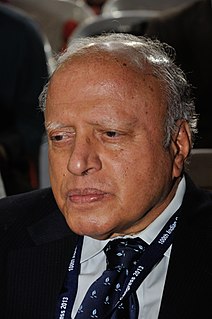Top 80 Quotes & Sayings by M. S. Swaminathan
Explore popular quotes and sayings by an Indian scientist M. S. Swaminathan.
Last updated on April 20, 2025.
A number of non-banking finance companies have entered the rural microcredit market. Many microcredit agencies have been charging interest rates not very dissimilar to those charged by moneylenders. Borrowing then becomes more to meet pressing consumption needs, rather than for farming or small-scale enterprises.
In any case, if I grow hybrid maize or hybrid pearl mallet or any hybrid, I have to sow fresh seed every year. I cannot keep the seed of the same plant. If I keep the seed of the same plant, yield will be much less and there will be a wide variation in the field, like maturity period, quality and so on.
A life cycle approach to food security will imply attention to the nutritional needs of a human being from conception to cremation. The most vulnerable but neglected segment is the first 1,000 days in a child's life - the period from conception to the age of two, when much of the brain development takes place.





















